(a) Royalties due on gas production from leases subject to the requirements of this subpart, except helium produced from Federal leases, shall be at the rate established by the terms of the lease Royalty shall be paid in value unless ONRR requires payment in kind When paid in value, the royalty due shall be the value, for royalty purposes, determined pursuant to 30 CFR part 16 of thisUse the sequence Count from the first QRS complex, the first thick line is 300, the next thick line 150 etc Stop the sequence at the next QRS complex When the second QRS complex is between two lines, take the mean of the two numbers from the sequence or use the finetuning method listed below12 Lead ECG Interpretation The Basics and Beyond Cindy Weston, DNP, RN, CCRN, CNSCC, FNPBC Assistant Professor Texas A&M University College of Nursing cweston@tamhscedu Objectives • Review the basics of 12 lead electrocardiogram • Review the physiology of ECG • Review when to order and mechanisms for coding and billing a 12 lead ECG

Phase 1 Study To Access Safety Tolerability Pharmacokinetics And Pharmacodynamics Of Kynurenine In Healthy Volunteers Al Karagholi 21 Pharmacology Research Amp Perspectives Wiley Online Library
300 150 ecg method
300 150 ecg method-300/# large boxes between R waves o Good for slow rhythms o 300, 150, 100, 75, 60, 50 rule o Question How much time is one large box?Count big boxes to estimate HR 300, 150, 100, 75, 60 ECG What does each small square represent?




Determine Hr From A Regular Rhythm Ekg 1500 300 Methods Youtube
EKG Basics › Most Popular Education Newest at wwwetsuedu Education Details Use the following numbers to indicate what the heart rate is between two successive R waves 300, 150, 100, 75, 60, 50, 43, 37, 33, 30 Method # 2 The Six Second Tracing Method Obtain a six second tracing (30 five mm boxes) and count the number of R waves that appear within that 6 second period andMemorize the following sequence of numbers as stated in the ECG Strip Ease Book, 300, 150, 100, 75, 60,50 4 Start with the pwave or rwave (according to which rate you are measuring) closest to a heavy line on the EKG paper Assign the next series of heavy lines the six numbers respectivelyNow, all this being said, the safe withdrawal rate is typically used to analyze yeartoyear spending, while this rule of 300 is being applied to
Best for fast rhythms o Question How much time is one small box?The 300 Method Count the number of large boxes between 2 successive R waves and divide by 300 to obtain heart rate 4 The 1500 Method Count the number of small boxes between two successive R waves and divide this number into 1500 toThe mnemonic to estimate the rate in beats per minute (BPM) In other words if you pass 2 lines before the next QRS, the heart rate (HR) would be less than 150 Remember that this is merely an estimate You should use
Bix rule – know the breaking point of rhythm pattern on ECG Atrial flutter waves occur at about /min usually around 300 These flutter waves, especially of newer onset are conducted with 21 through AV node resulting in ventricular rateECG What is the rule of 300?3step approach (1) Locate R wave that falls on or near thick line (2) Count # of thick lines until next R wave (3) Use "" rule Regular rhythms If HR <100 BPM HR = (300) / (# large squares b/t cycles) If HR >100 BPM HR = (1500) / (# small square b/t cycles) Irregular or bradycardic rhythms HR = (# cycles over interval) x (# to get to 1 minute)




Basic Ekg




How Is The Heart Rate Determined On Electrocardiography Ecg
In this video, I demonstrate how to use the Big Box Method (AKA the 300 method) to determine the heart rate on an ECG Check out the 6 second method too1 mm in length Additionally, what is the 300 rule for ECG?(large boxes between QRS complexes) 300, 150, 100, 75, 60, 50 Irregular rhythms or severe bradycardia = (total number of QRS complexes on ECG) x




Ecg Basics What Is An Ecg The Electrocardiogram




Jaypeedigital Ebook Reader
Similarly one may ask, how long is each square on ECG?• Using the rules of ECG Interpretation, identify sinus rhythms Rate 300 rule The square counting method is ideal for regular heart rates Use the sequence Count from the first QRS complex, the first thick line is 300, the next thick line 150 etc Count theQRS complexes found in a 6second portion of the ECG tracing • The 300, 150, 100, 75, 60, 50 method involves locating an R wave on a bold line on the ECG paper, then finding the next consecutive R wave and using the 300, 150, 100, 75, 60, 50 values for subsequent bold lines to determine the rate
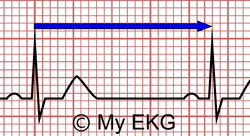



How To Calculate The Heart Rate On An Ekg



Nursing Bibs Ekg Rate
12Lead EKG Interpretation jontardiff@aolcom • I work for Virginia Garcia Memorial Health Center, Beaverton, Oregon 300 150 60 6 seconds Horizontal axis is time (mS);Heart rates associated with each of the large boxes in the following order are 300, 150, 100, 75, 60, 50, 43, 37, 33 beats per minute (bpm) View Media Gallery Heart rate boxesWe can calculate the beats per minute (bpm) by dividing 300 by the number of LARGE squares between two R waves (RR interval = one beat) REGULAR rhythms Rate = 300 / number of LARGE squares between consecutive R waves Very FAST rhythms Rate = 1500 / number of SMALL squares between consecutive R waves SLOW or IRREGULAR rhythms Rate =



Co Grand Co Us Documentcenter View 636 Heart Rate Fast And Easy Ecgs Shade Wesley




Basic Ekg
Two large squares, 150 bpm, three large squares, 100 bpm, four 75 bpmVertical axis is electrical energy (mV) 33 • Rule out other confounders WPW, pericarditis, LVH,Remember the sequence 300, 150, 100, 75, 60, 50 Identify an R wave that falls on the marker of a `big block' Count the number of big blocks to the next R wave If the number of big blocks is 1, the rate is 300, if it's two, then the rate is 150, and so on




Heart Rate The Premier Ekg Resource For Medical Professionals Ekg Md Dr Anthony Kashou




Determining Rate Learn The Heart
Place the beginning point of a cardiac ruler over an R wave Look at the number on which the next R wave falls and that becomes the heart rate for that patient Use the following numbers to indicate what the heart rate is between two successive R waves 300, 150, 100, 75, 60, 50, 43, 37, 33, 30 Method # 2 The Six Second Tracing MethodPreventricular contraction (PVC) ECG how long is aWorker health and safety (a) Response actions under the NCP will comply with the provisions for response action worker safety and health in 29 CFR The NRS meets the requirements of 29 CFR concerning use of an incident command system
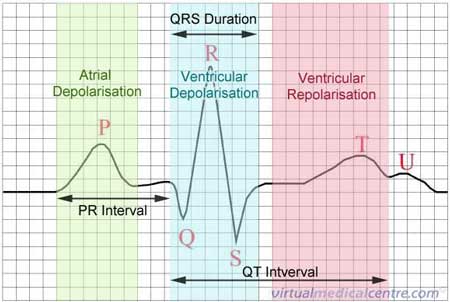



How To Read An Ecg



Large Block Method To Calculate Heart Rate Ecg Medical Training
ECG Interpretation ECG Interpretation Rate Methods to determine heart rate 1500/# small boxes between R waves o Most accurate;300, 150, 100, 75, 60, 50, 43, 37, 33 The heart rate irregular rhythm If the heart rate is irregular, count the number of QRS complexes on the ECG and multiply by 6 to obtain the average heart rateRegular or irregular (RR Interval consistent or not)




Cardiovascular Monitoring Electrocardiogram Ppt Video Online Download




How To Compute The Rate Youtube
Another method, which gives a rough approximation, is the count off method Simply count the number of large squares between R waves with the following rates 300 150 100 75 60 For example, if there are three large boxes between R waves, then the rate is 100 beats/min One must extrapolate, however, between boxes004 seconds ECG Which condition would have a regular but interrupted rhythm?This improves the speed and most importantly the reliability of your assessments, especially when you encounter an arrhythmia Below I have included my recommendation on how read an ECG Rate?



Ekg Paper Ems Education
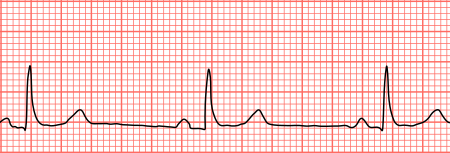



Bradycardia Physiopedia
Is the rate fast or slow (RR Interval and 300, 150, 100 rule) Rhythm?Diagnosis Perioperative MI is mostly silent, and the electrocardiogram (ECG) is often difficult to interpret and frequently does not exhibit characteristic STsegment elevation or Qwaves In the frequent absence of typical symptoms and ECG signs of acute MI, the diagnosis of PMI has to rest heavily on changes in biochemical markers Cardiac troponins appear to• , each small block = 30 bpm • , each small block = 10 bpm • , each small block = 5 bpm pacemaker cells follow the rule that the fastest to repolarize will depolarize first • The rules of normal sinus rhythm are This is represented by a variable P – R interval on the EKG • The rules of a Wandering



Co Grand Co Us Documentcenter View 636 Heart Rate Fast And Easy Ecgs Shade Wesley
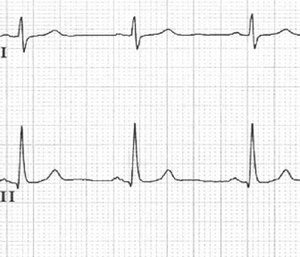



Moving Beyond The Standard 12 Lead Ecg
The rule of 300 No of big boxes Rate (apprx) 1 300 2 150 3 100 4 75 5 60 6 50 10 second rule • As most ECG record 10 seconds of rhythm per page, one can simply count the number of beats present on the ECG and multiply by 6 to get the number of beats per secondsOption 1 ount each QRS complex in rhythm strip and multiply by 6 (EKG is 10 sec long) Ex 12 x 6 = 72 Option 2 "Rule of 300" For regular (and only regular) rhythms count large boxes between QRS complexes and estimate 1 ox = 300/1 = 300 bpm 5 oxes = 300/5 = 60 bpm 2 oxes = 300/2 = 150 bpm 6 oxes = 300/6 = 50 bpm12/2/16 3 A Second Look SA Node – bpm Max 150 AV/Junctional Node –4060 bpm Purkinje/Ventricles 40 bpm 13 The Pacing Principle The SA node is the inherent pacemaker of the heart However, the pacemaker that is firing the fastest at



Co Grand Co Us Documentcenter View 636 Heart Rate Fast And Easy Ecgs Shade Wesley
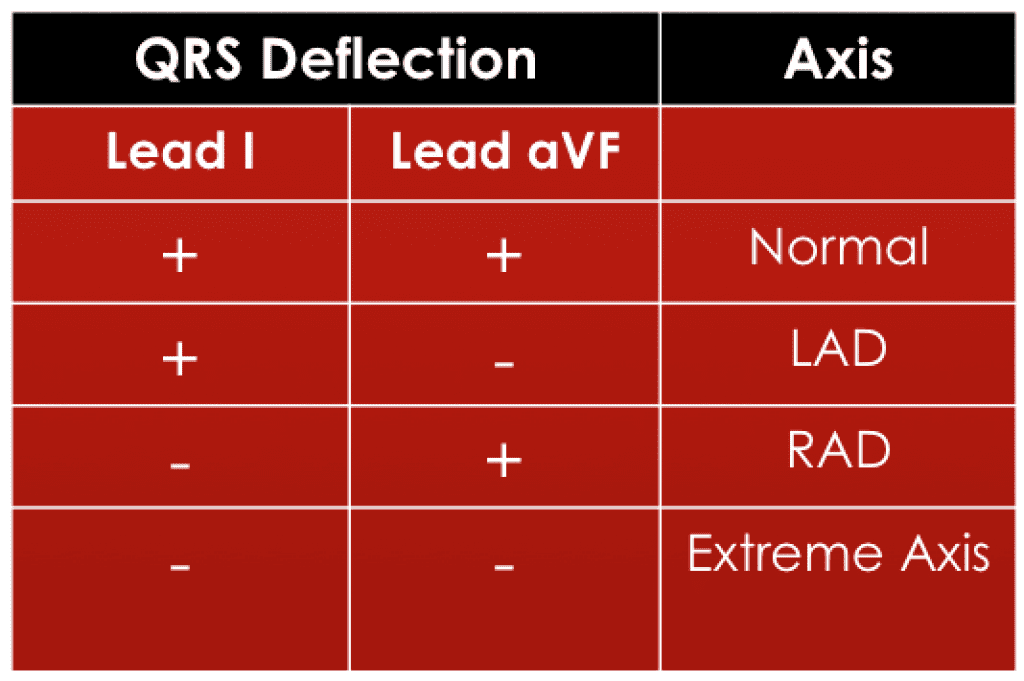



Ecg Basics Rebel Em Emergency Medicine Blog
Rule of 300 (regular rhythm, big boxes btwn QRS/300)large boxes 300, 150, 100, 75, 60, 50Rate determination chart (R to R spaces on chart) ECG wave from outside heart interference seen (fuzzy baseline) from patient movement (MC) loose orApproach to the ECG – Andy Hughes General Schema Rate Rhythm Axis Intervals Morphology Rate Regular rhythms, "Rule of 300" = 300 ÷Distance markers on EKG represent 15 large boxes (3 seconds) Count QRS Complex es between spanning 2 distance markers (30 large boxes, 6 seconds) Multiply complex count by 10 for Heart Rate per minute Interval between complexes Count large boxes (02 seconds) between complexes Divide 300 by box count 300, 150, 100, 75, 60, 50




How To Read An Ecg
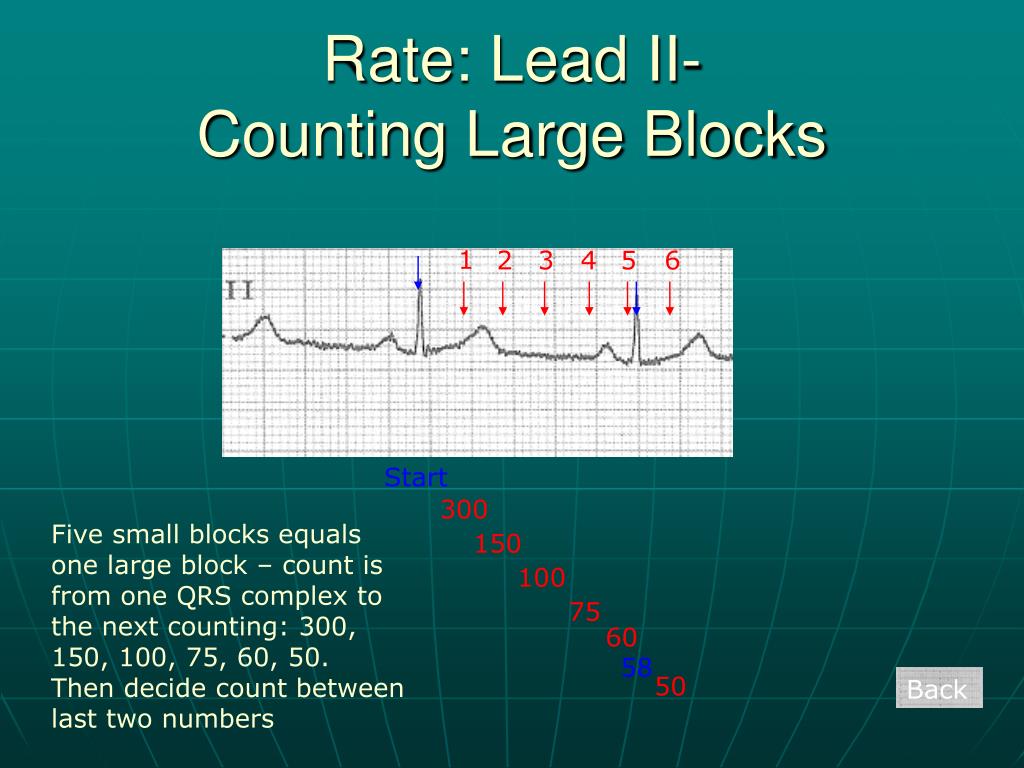



Ppt 12 Lead Ecg Powerpoint Presentation Free Download Id
# R waves in300 150 100 75 60 250 214 187 167 136 125 115 107 94 79 71 68 65 62 (to rule out Hemiblock) Irregular Rhythms (pages ) Sinus Arrhythmia (page 100) Irregular rhythm that varies Rapid Interpretation of EKG's by Dale Dubin, MD COVER Publishing Co, PO Box 1092, Tampa, FL , USAThe Cardiac Ruler or Sequence Method Count the number of big boxes between R waves and count using the following numbers This can only be used on regular rhythms and not on irregular rhythms
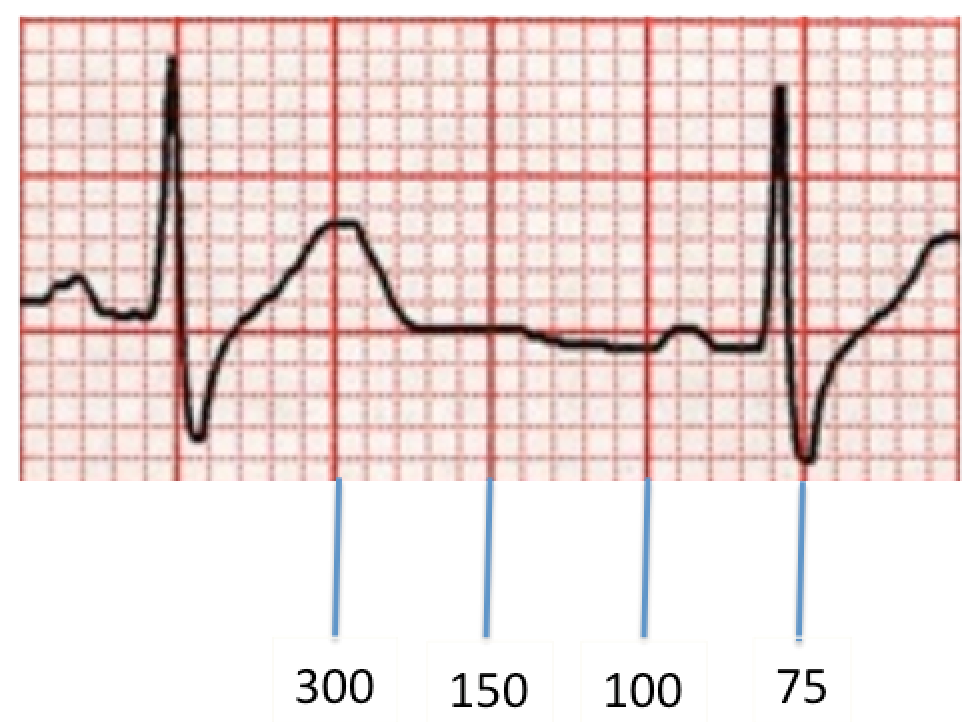



Ecg Basics Rebel Em Emergency Medicine Blog




Learning How To Read Electrocardiograms Ekgs Can We Calculate The Rate
An alternative method is to count down from 300, 150, 100, 75, and 60 from each of the dark vertical lines between the QRS complexes ItEKG rhythm interpretation on how to count a heart rate using the 6 second rule This video shows how to calculate a heart rate on an ECG strip using the sixDetails The EKG is a summary of electrical events in the heart that includes depolarization and • , each small block = 30 bpm • , each small block = 10 bpm • , each small block = 5 bpm pacemaker cells follow the rule that the fastest to repolarize will depolarize first
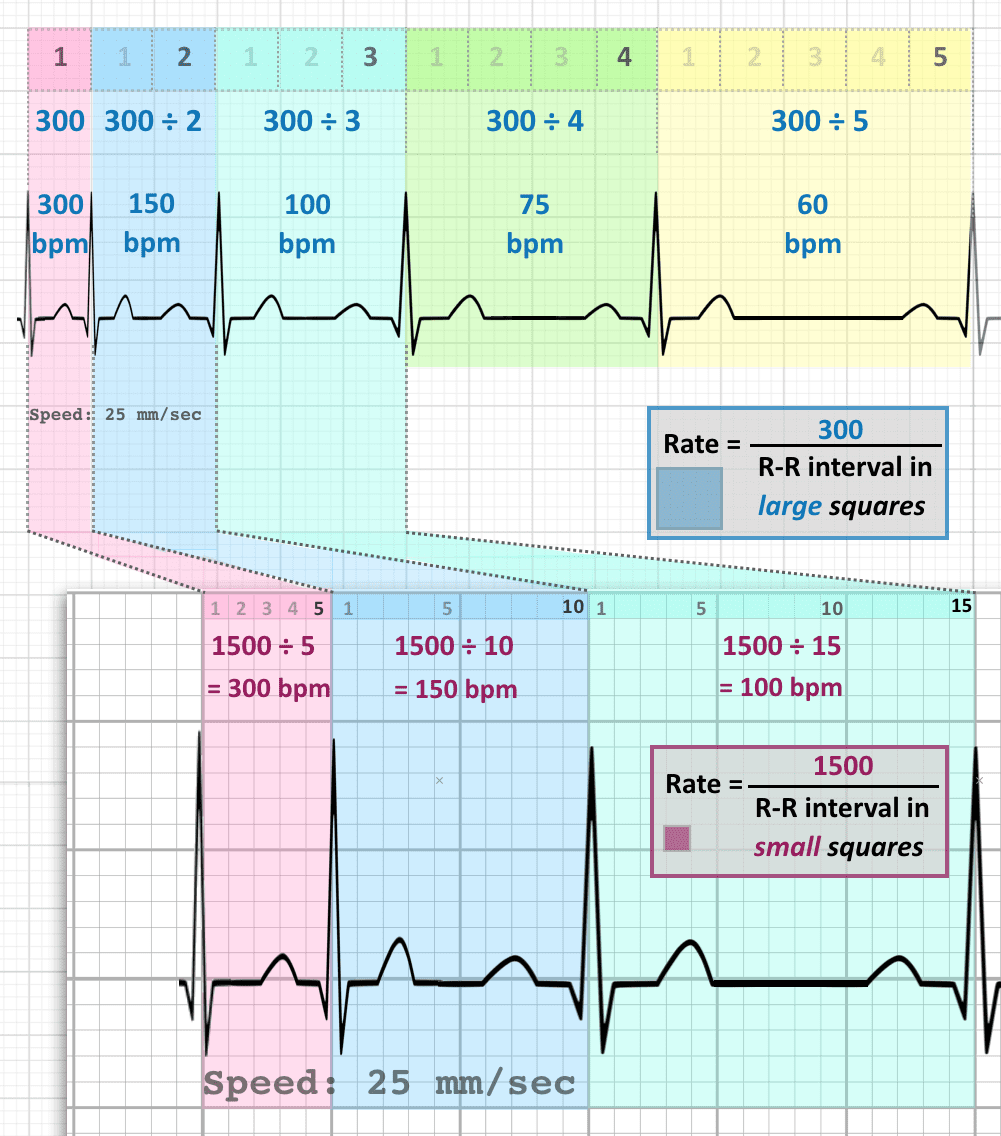



Ecg Rate Interpretation Litfl Medical Blog Ecg Library Basics




Reliability Of Heart Rate Variability Features Derived From Ultra Short Ecg Recordings And Their Validity In The Assessment Of Cardiac Autonomic Neuropathy Sciencedirect
All the rules of vector analysis apply Note that the wave of depolarization moves through the heart in three dimensions, but that each ECG lead records it in just one dimension, between two poles Having 12 leads grouped in frontal and horizontal planes allows us to reconstruct electrical events in three dimensions (Fig 12)3 large blocks 100 2 large blocks 150 1 large block 300 We know the "normal" heart rate is (although some would argue that 5090 is more accurate) Using the normal heart rate should have 35 large blocks between RwavesIn clinical context Now we've gone through the system, let's use the "ECG Rule of Fours" to interpret the ECG we were presented with above (1) History 60 year old male, weakness and respiratory failure Lead placement looks ok (ECG anonymised, but should have a sticker) Hmmmm, this is sounding suspicious already




Ecg Basics Methods Of Heart Rate Calculation Youtube



Ecg A Pictorial Primer
There are many ways you can count a heart rate on an EKG, but I find the six second rule to be the easiest and fastest way In addition, the six second rule is great for counting heart rhythms that aren't regular like, atrial fibrillation, atrial flutter, sinus arrhythmia, sinus rhythm with PVCs etc Before you can understand how to count the heart rate using the 6 second rule, you must4 Divide the number 300 by your answer above Once you have calculated the number of big squares separating QRS complexes (let's use 32 as an example), perform the following calculation to determine heart rate 300/32 =Interpreting EKG Rhythm Strips Step 1 – Heart Rate Methods to determine heart rate The 6 second method Denotes a 6 second interval on EKG strip Strip is marked by 3 or 6 second tick marks on the top or bottom of the graph paper Count the number of QRS complexes occurring within the 6 second interval,
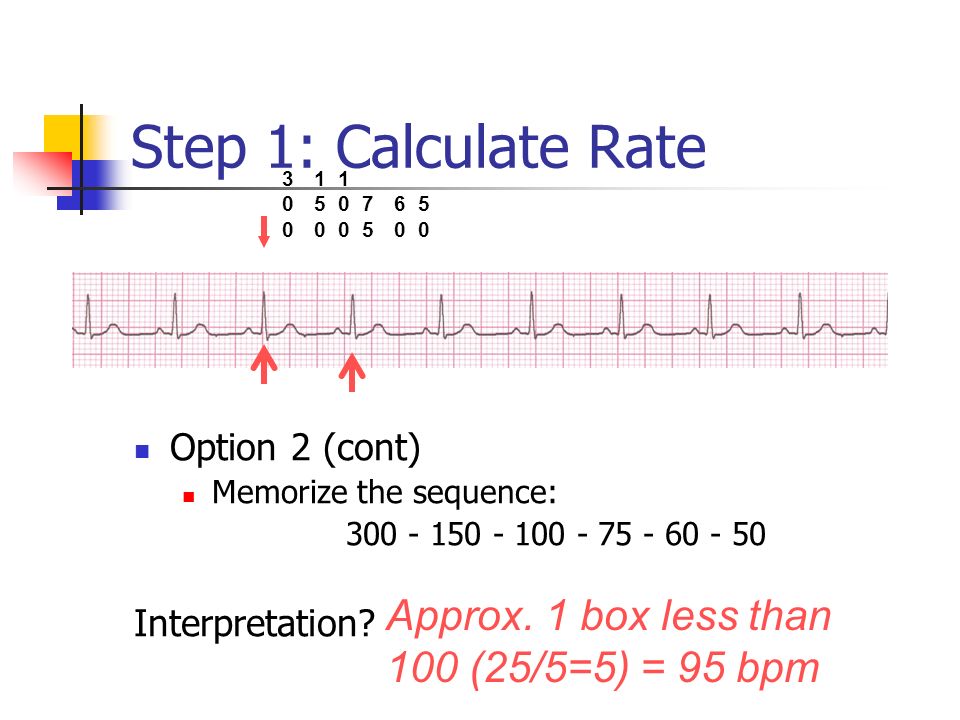



Dr Boyd St Elizabeth Healthcare Ppt Download
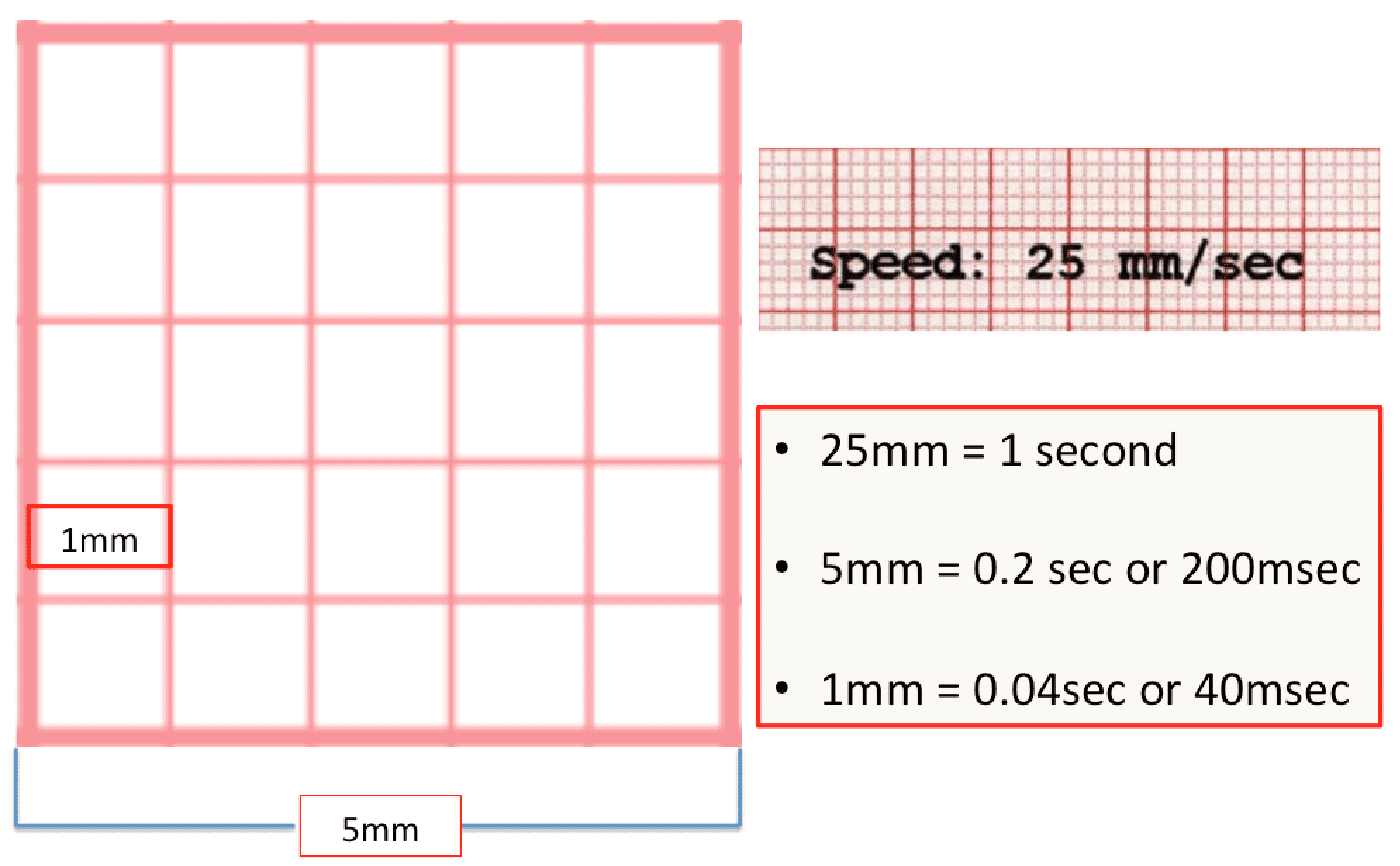



Ecg Basics Rebel Em Emergency Medicine Blog
On the EKG, locate a R wave that matches a thick line, count the number of large squares to the next R wave Heart rate is 300 divided by the number of large squares , and that's it!300 150 100 75 60 250 214 187 167 136 125 115 107 94 79 71 68 65 62 (to rule out Hemiblock) Irregular Rhythms (pages ) Sinus Arrhythmia (page 100) Rapid Interpretation of EKG's by Dale Dubin, MD COVER Publishing Co, PO Box , Fort Myers, FL , USAFor example if there is 1 large square between R waves, the heart rate is 300 bpm;



Co Grand Co Us Documentcenter View 636 Heart Rate Fast And Easy Ecgs Shade Wesley
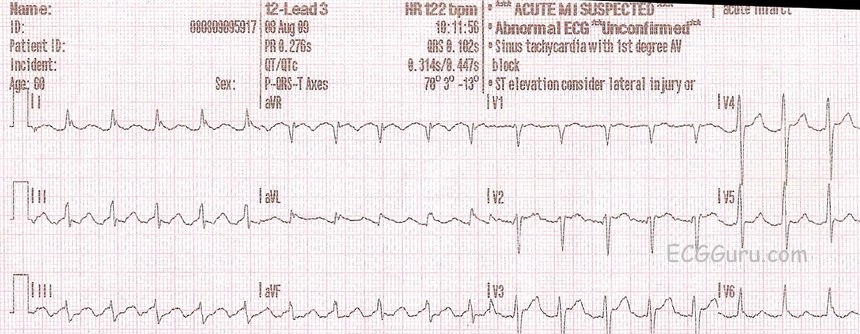



10 Tips To Diagnose Atrial Flutter On An Ekg



Co Grand Co Us Documentcenter View 636 Heart Rate Fast And Easy Ecgs Shade Wesley




Use The Bix Rule While Interpreting Svt Cme India




Determine Hr From A Regular Rhythm Ekg 1500 300 Methods Youtube




Determine Hr From An Irregular Rhythm Ekg 6 Second Method Youtube




Why Does Atrial Flutter Fool Us So Often Top 10 Tips To Minimize Uncertainty Learn Advanced




Aprende A Calcular La Frecuencia Cardiaca De 3 Formas Diferentes En El Ecg Video Medicina Mnemotecnias
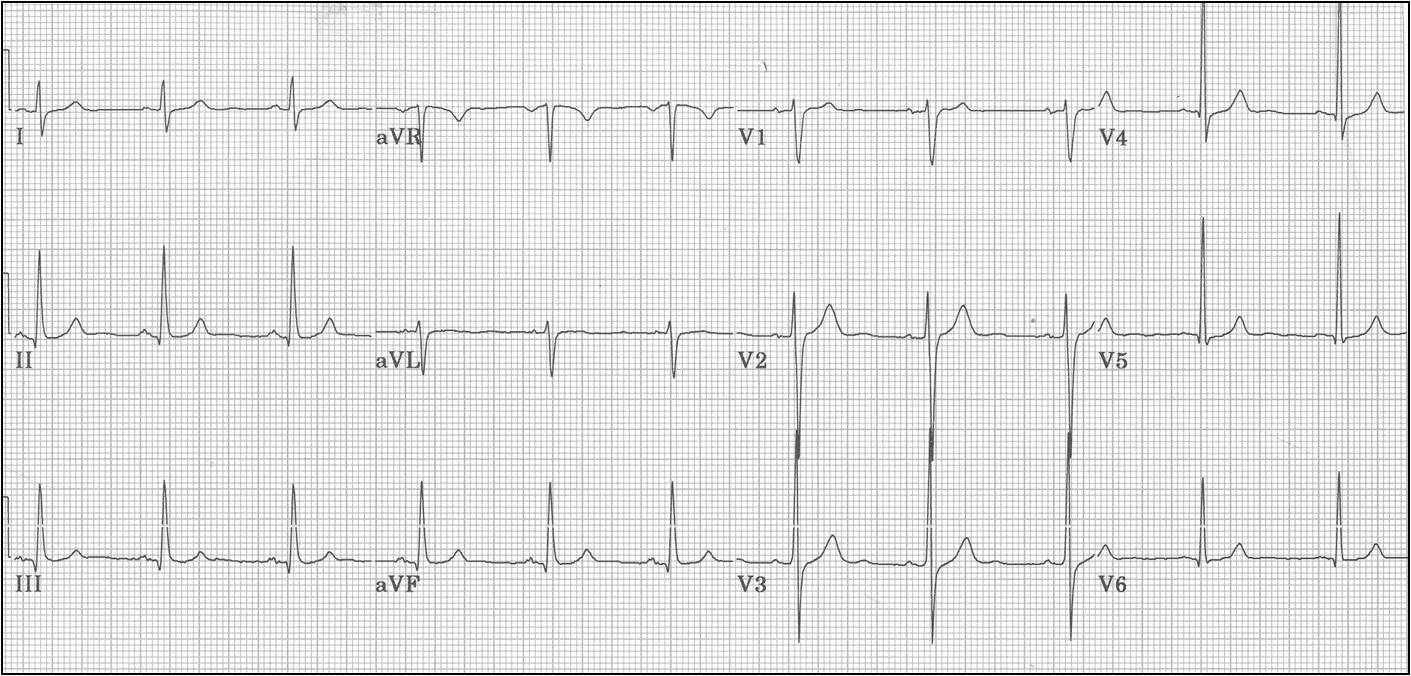



How To Read An Ecg Physical Therapy Reviewer




Ecg Knowledge Amboss



Q Tbn And9gcteww8qp9wt1jydlnb39zitwtewhkghpqdmemgudhgdzr7hks Usqp Cau
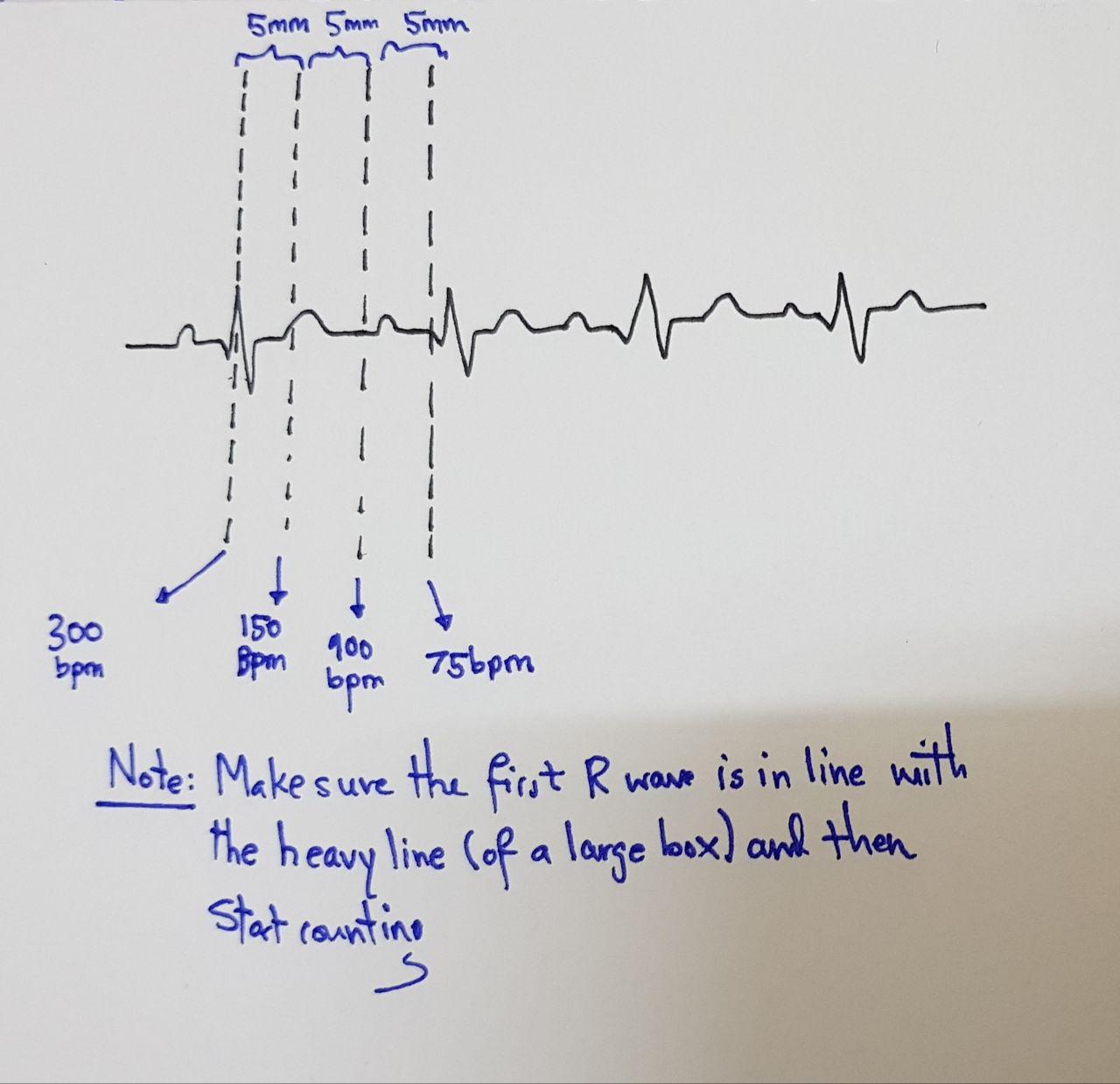



Medicowesome Mnemonics And Basics Of Ecg Interpretation



Co Grand Co Us Documentcenter View 636 Heart Rate Fast And Easy Ecgs Shade Wesley




Ekg Ch 3 Analysis And Interpretation Flashcards Quizlet




Ecg Rate Interpretation Litfl Medical Blog Ecg Library Basics
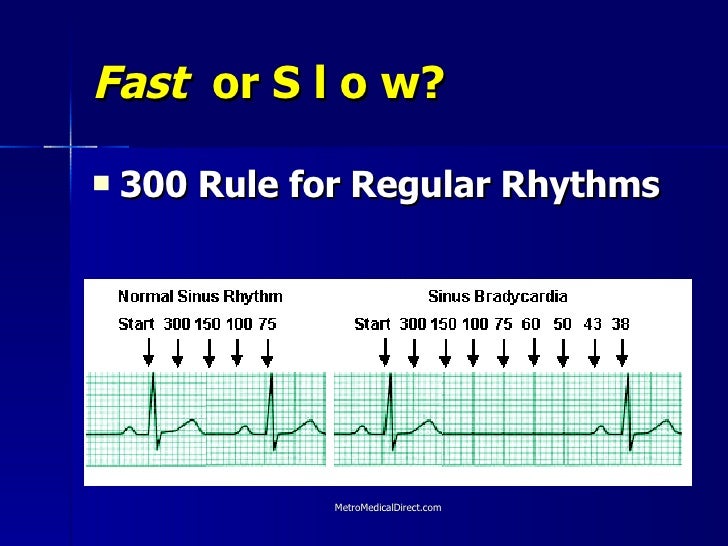



Basic Ekg



Co Grand Co Us Documentcenter View 636 Heart Rate Fast And Easy Ecgs Shade Wesley



Http Samples Jbpub Com Ch04 Pass02 Levine Pdf




Why Does Atrial Flutter Fool Us So Often Top 10 Tips To Minimize Uncertainty Learn Advanced



1



Co Grand Co Us Documentcenter View 636 Heart Rate Fast And Easy Ecgs Shade Wesley
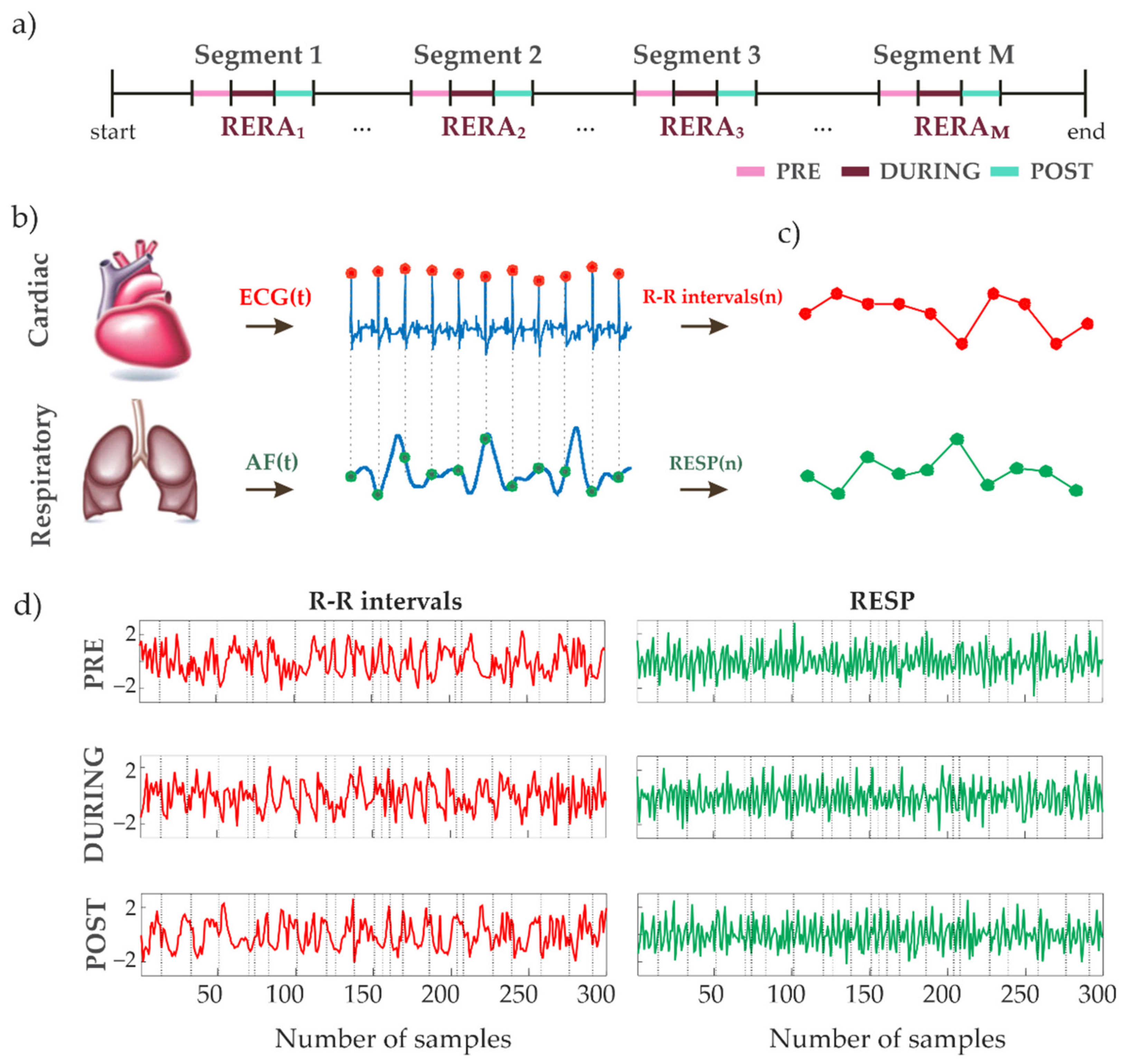



Entropy Free Full Text Assessment Of Cardiorespiratory Interactions During Apneic Events In Sleep Via Fuzzy Kernel Measures Of Information Dynamics Html




Phase 1 Study To Access Safety Tolerability Pharmacokinetics And Pharmacodynamics Of Kynurenine In Healthy Volunteers Al Karagholi 21 Pharmacology Research Amp Perspectives Wiley Online Library




Heart Rate Calculation Exercises Youtube
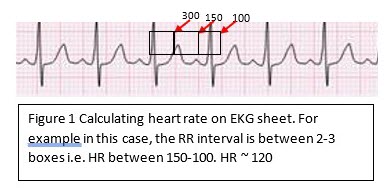



Pediatric Cardiology Part 2




Rate Ecgpedia




Basic Ekg And Rhythm Interpretation Symposia The Crudem Foundation
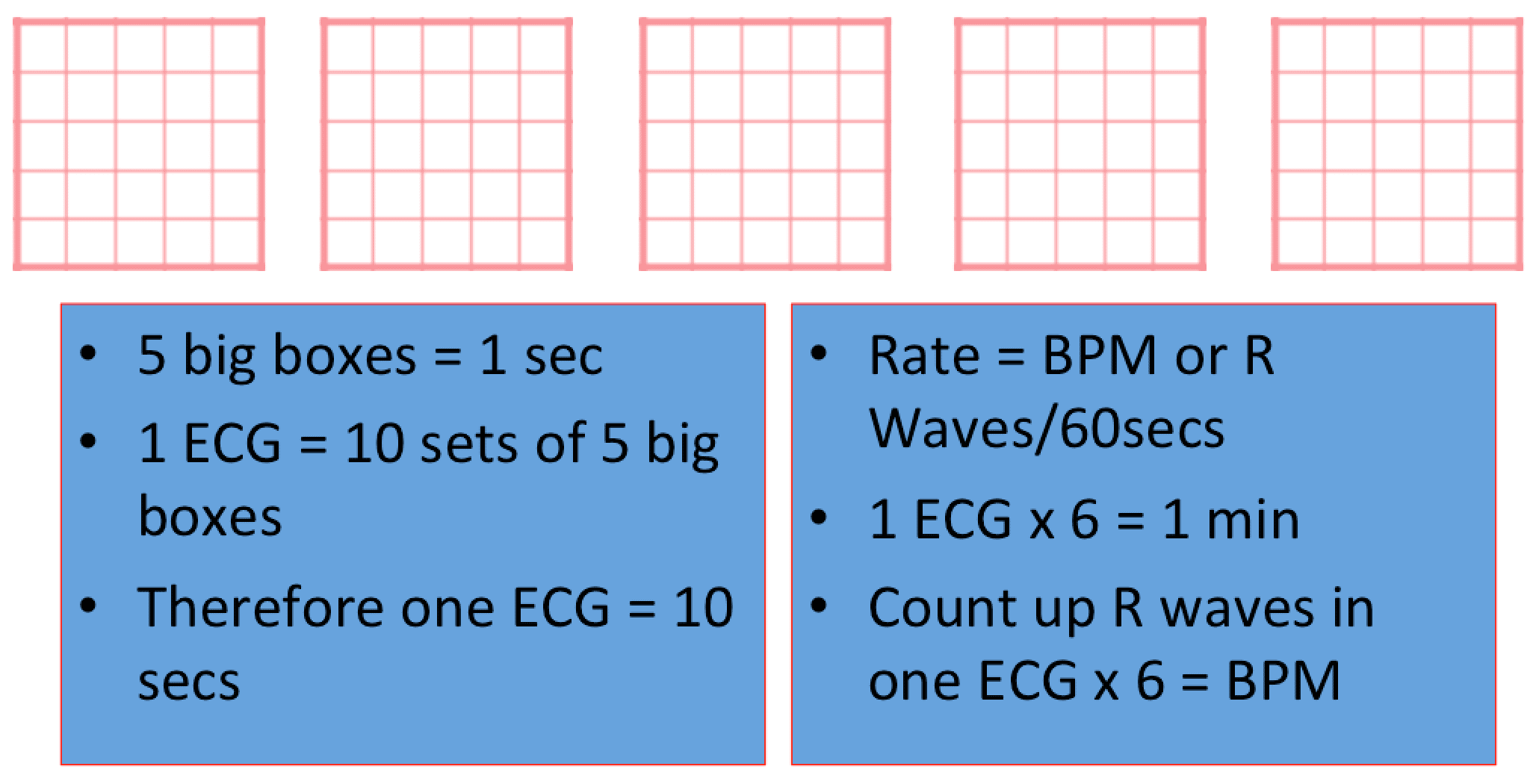



Ecg Basics Rebel Em Emergency Medicine Blog
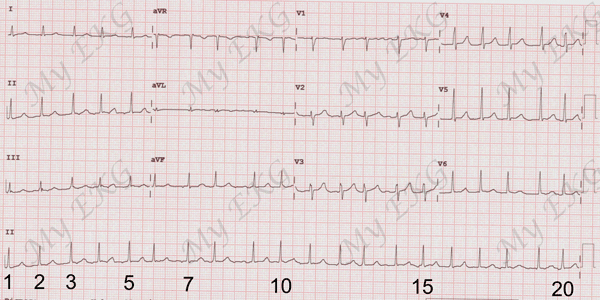



How To Calculate The Heart Rate On An Ekg



1



Co Grand Co Us Documentcenter View 636 Heart Rate Fast And Easy Ecgs Shade Wesley



Co Grand Co Us Documentcenter View 636 Heart Rate Fast And Easy Ecgs Shade Wesley




Ekg Lecture Series Fundamentals Flashcards Quizlet




Ecg Basics 5 10 Rate Calculation Youtube
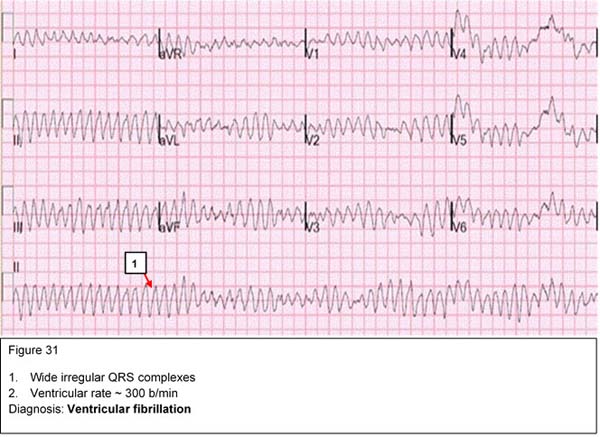



Pediatric Cardiology Part 2




Rate




Ecg Basics Rebel Em Emergency Medicine Blog




Use The Bix Rule While Interpreting Svt Cme India




Basics Of Electrocardiography Ecg
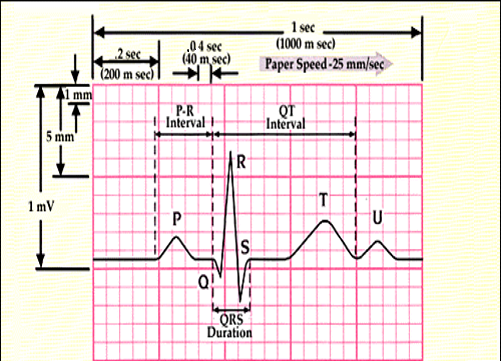



How To Read An Ecg Physical Therapy Reviewer




Why Does Atrial Flutter Fool Us So Often Top 10 Tips To Minimize Uncertainty Learn Advanced




Deep Neural Network Estimated Electrocardiographic Age As A Mortality Predictor Medrxiv
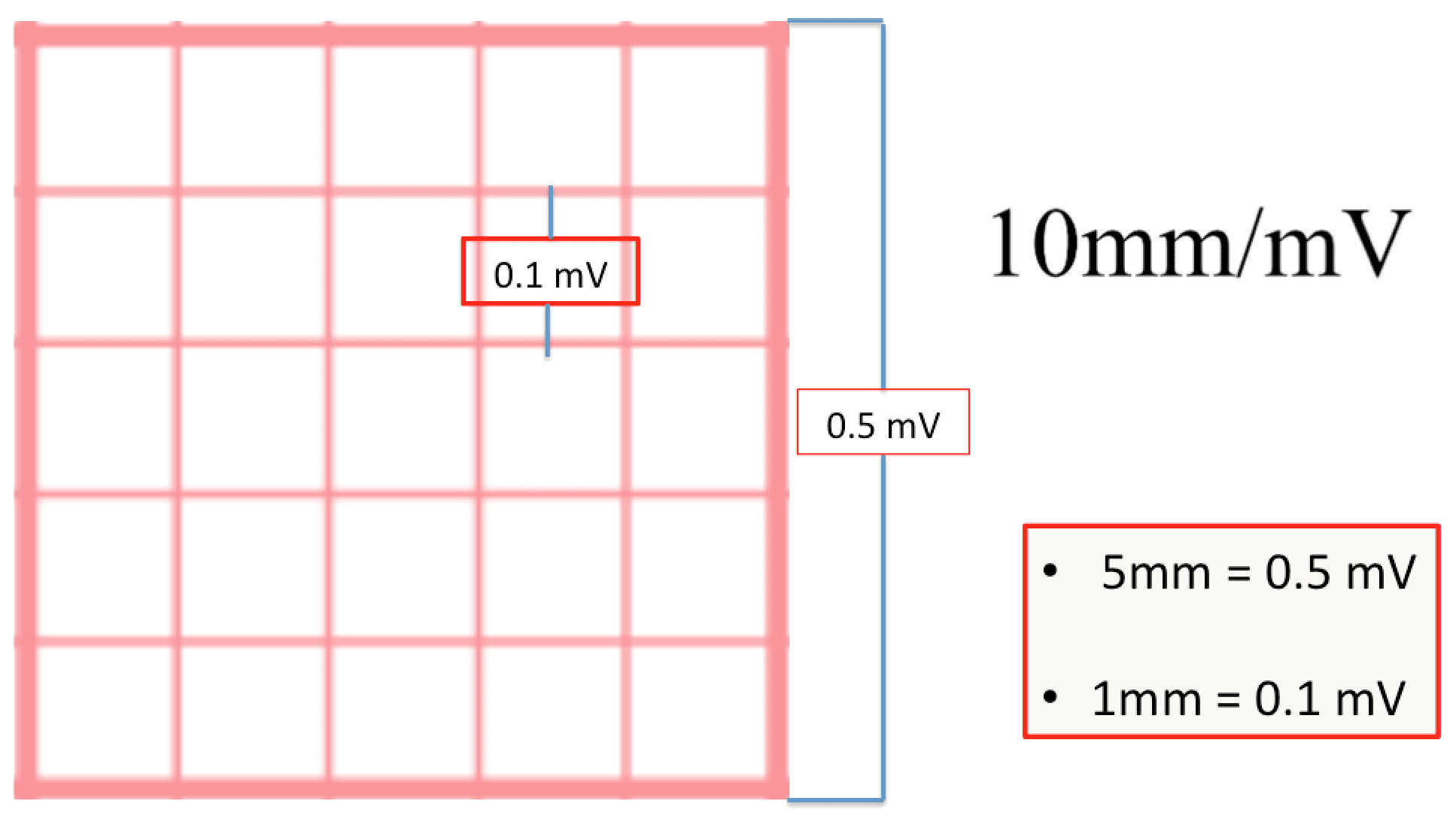



Ecg Basics Rebel Em Emergency Medicine Blog




Anatomy Ppt Video Online Download
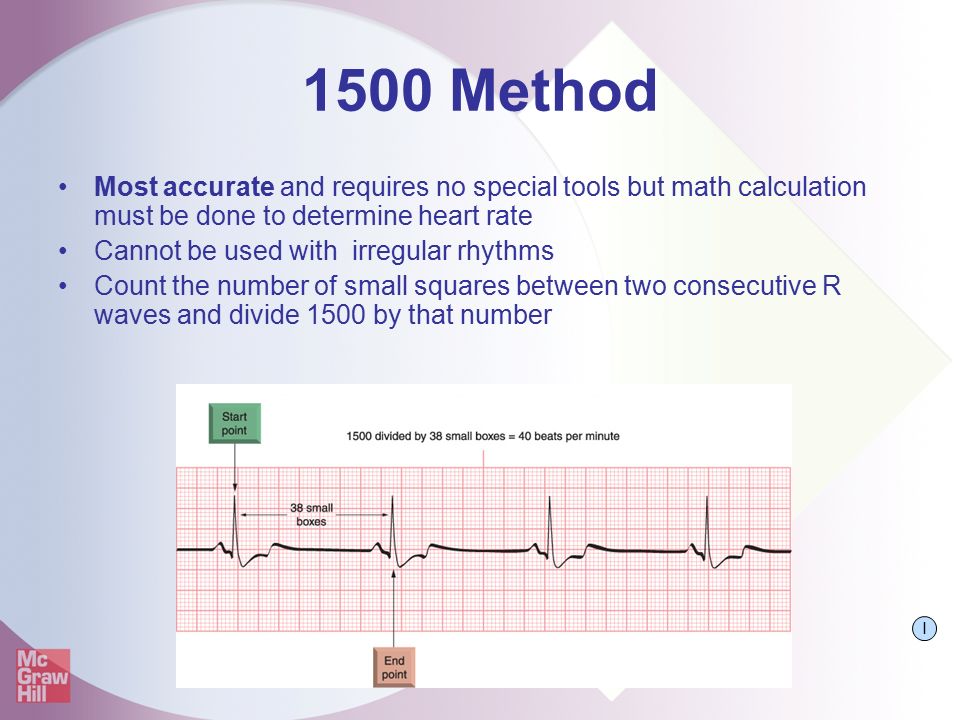



Fast Easy Ecgs A Self Paced Learning Program Ppt Video Online Download




How To Read An Ecg




Ecg Rule Blundell Harling




Cv Physiology Determining Heart Rate From The Electrocardiogram
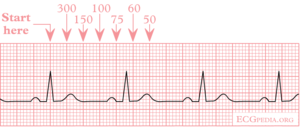



Rate Ecgpedia



Admin Abcsignup Com Files Da1537b2 387c 452a 0e d8eb6 9 435 Basicecgpptallslides Pdf
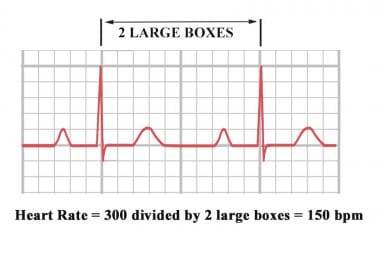



How Is The Heart Rate Determined On Electrocardiography Ecg




How To Find Heart Rate Pulse From Ekg Youtube




Patwari Academy Ecg Rate Rhythm Axis




Lab Activity 24 Ekg Reference Dubin Dale Rapid




An Ecg Based Feature Selection And Heartbeat Classification Model Using A Hybrid Heuristic Algorithm Sciencedirect



1




Ekg Interpretation Cheat Sheet 1 Rate Regular Grepmed
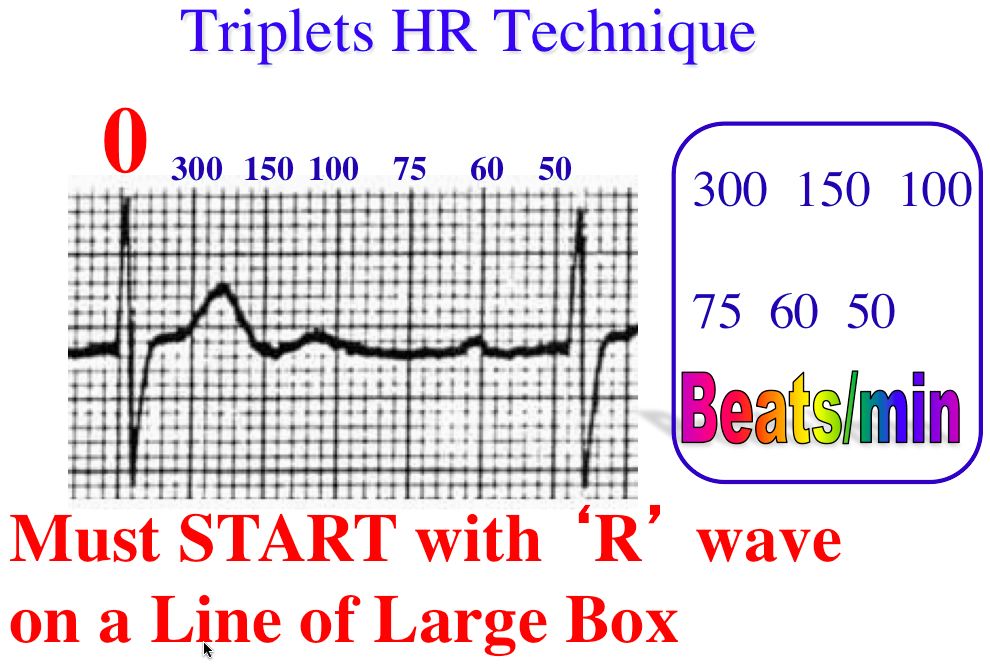



Triplets R To R 6 Second Heart Rate Method




Reliability Of Heart Rate Variability Features Derived From Ultra Short Ecg Recordings And Their Validity In The Assessment Of Cardiac Autonomic Neuropathy Sciencedirect
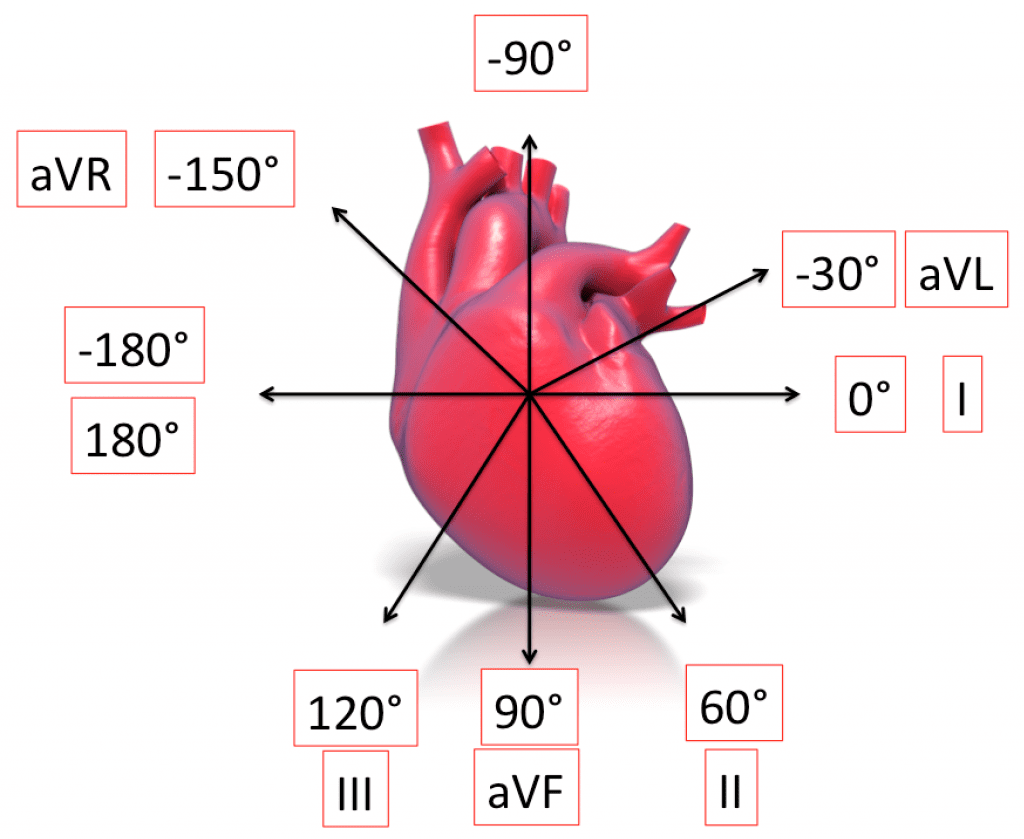



Ecg Basics Rebel Em Emergency Medicine Blog
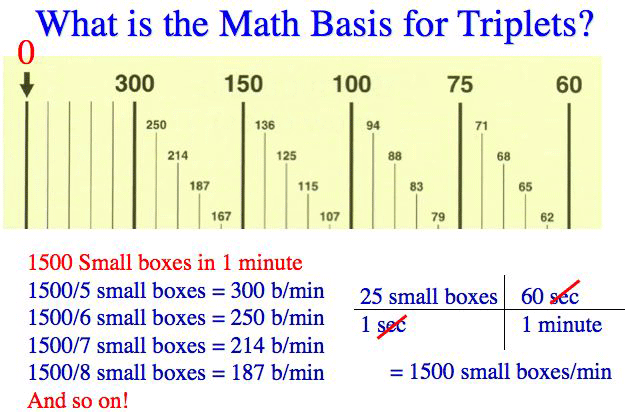



Triplets R To R 6 Second Heart Rate Method



Co Grand Co Us Documentcenter View 636 Heart Rate Fast And Easy Ecgs Shade Wesley
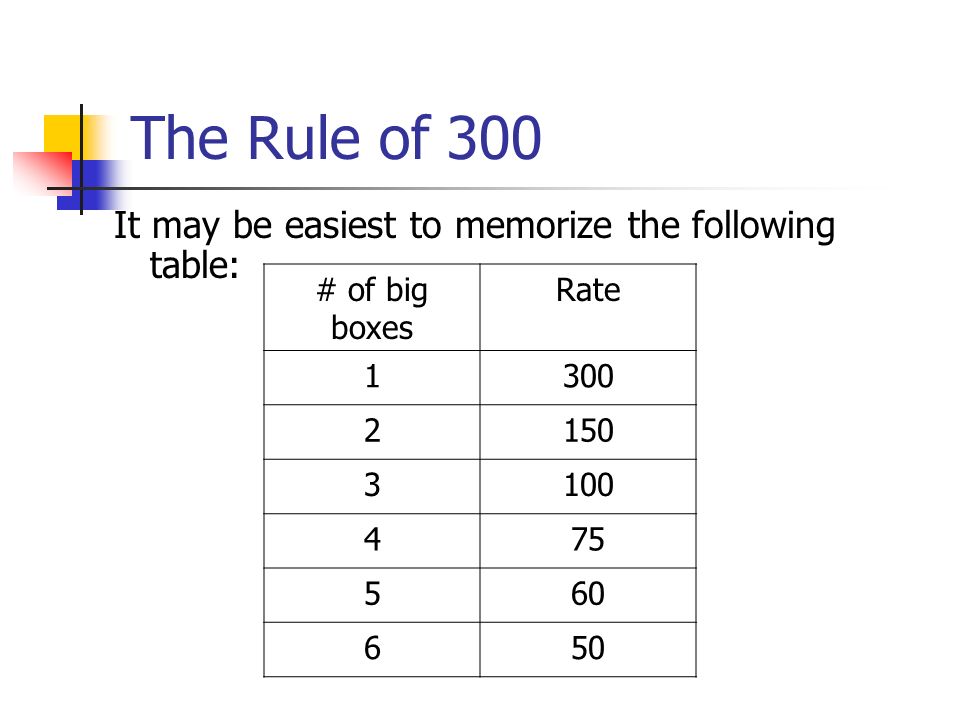



Focus 1 Ecg Course Dr Boyd Semc Ppt Download




Basics Of Ekg Interpretation Online Presentation
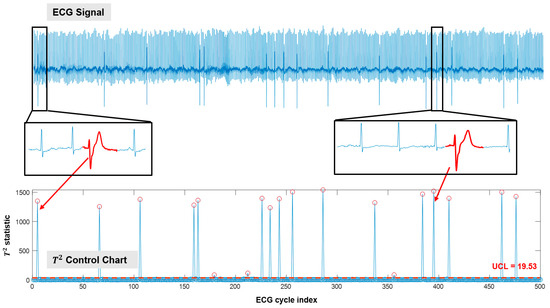



Sensors Free Full Text Tensor Based Ecg Anomaly Detection Toward Cardiac Monitoring In The Internet Of Health Things Html
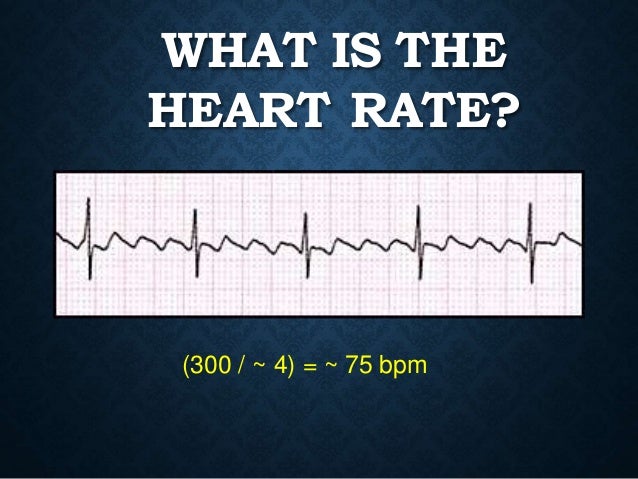



Basics Of Ecg
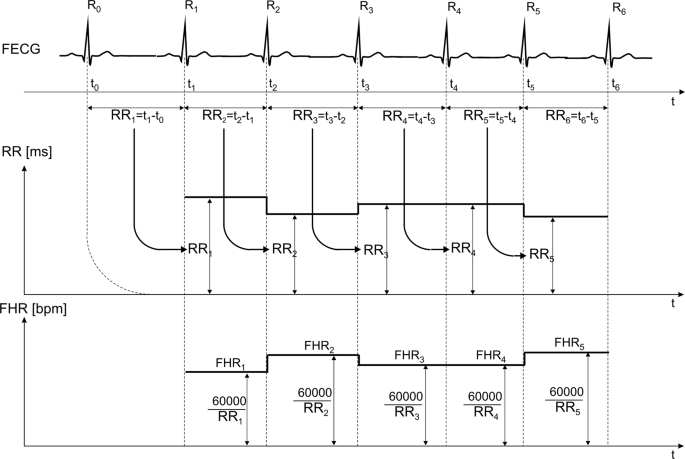



Fetal Electrocardiograms Direct And Abdominal With Reference Heartbeat Annotations Scientific Data
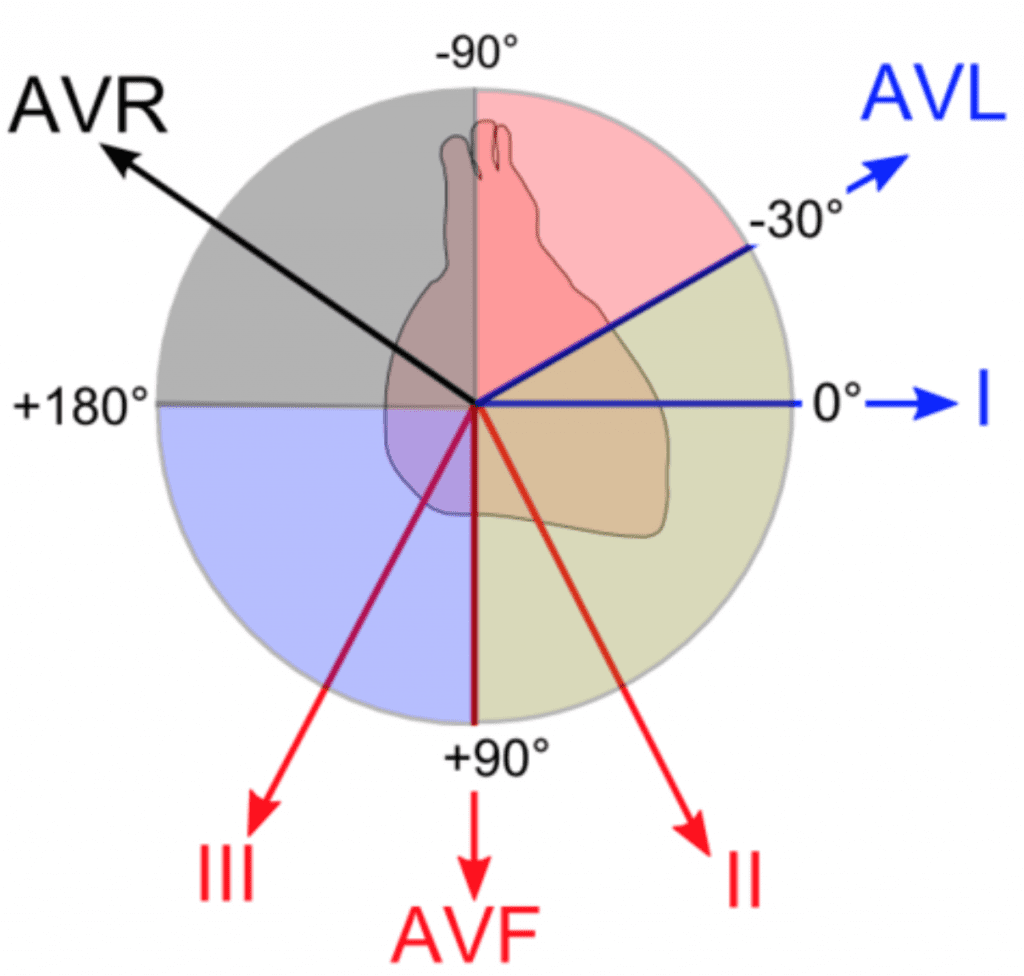



Ecg Basics Rebel Em Emergency Medicine Blog




Introduction To Ecg Interpretation Electrocardiogram Interpretation Is An



Co Grand Co Us Documentcenter View 636 Heart Rate Fast And Easy Ecgs Shade Wesley




Acadoodle
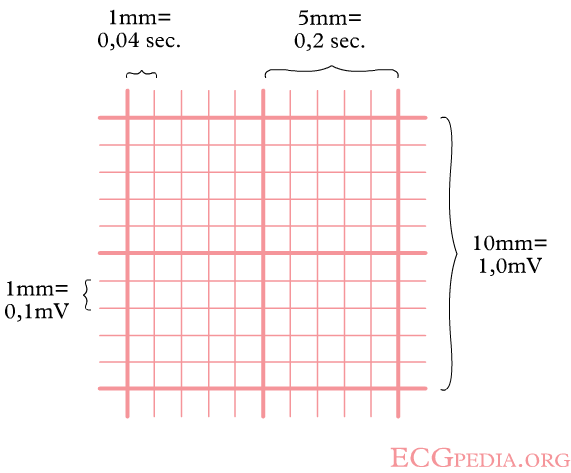



Heart Rate Wikidoc




Ecg M Bayat Ph D Ppt Video Online Download



Http Www Bremss Org Uploadedfiles File Ekg Intermediate Tips Tricks Tools Pdf



0 件のコメント:
コメントを投稿